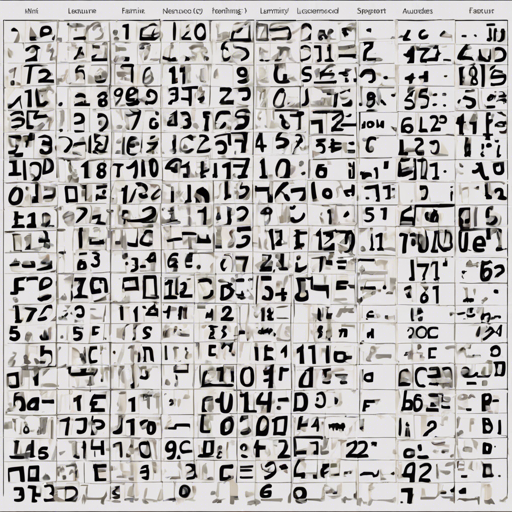In the world of deep learning, sparse autoencoders serve as a powerful tool for unsupervised feature learning. This article will guide you step-by-step through the process of implementing a sparse autoencoder to visualize and learn features using the MNIST dataset. So, let’s dive in!
What is a Sparse Autoencoder?
A sparse autoencoder is a type of neural network that aims to learn efficient representations (or features) of the input data while imposing a sparsity constraint on the hidden neurons. This means that only a few neurons activate in response to any given input, making the learned representation more robust.
Setting Up Your Environment
Before we start coding, ensure that you have the required dependencies installed. You will need the following:
- Python 3.x
- NumPy
- Matplotlib
Now, let’s take a look at the key scripts you’ll work with:
- load_MNIST.py: Load MNIST images
- sample_images.py: Load sample images for testing sparse autoencoder
- gradient.py: Functions to check cost and gradient
- display_network.py: Display visualized features
- sparse_autoencoder.py: Cost and gradient functions
- train.py: Train sparse autoencoder with MNIST data
Understanding the Sparse Autoencoder Code
Let’s break down the main steps involved in coding the sparse autoencoder. Consider the process as constructing a house:
- **Foundation (Input Layer)**: This is where your input data (images of digits) resides. Just as a house needs a solid foundation, a good dataset serves as the basis for your model.
- **Walls (Hidden Layers)**: These represent the features you’re learning. Sparsity means only a few features will be active, much like how only a few walls in a house may support a roof while others lie dormant.
- **Roof (Output Layer)**: The final output reconstructs the input data, similar to how a roof completes a house.
Training the Sparse Autoencoder
Using the script train.py, you will feed the MNIST data to your model:
# Example of how to load data and train the autoencoder
import load_MNIST
import sparse_autoencoder
import train
# Load the MNIST data
data = load_MNIST.load()
# Train the autoencoder
sparse_autoencoder.train(data)
Visualizing Features
After training, you can visualize the learned features using display_network.py. This step is akin to decorating your newly built house, showcasing the unique details of your construction.
Preprocessing the Data
Preprocessing your dataset is crucial for obtaining good results. Implementing PCA and ZCA Whitening helps in normalizing your data:
- pca_gen.py: Implements PCA and whitening techniques.
Troubleshooting Common Issues
If you encounter issues during training or visualization, consider the following troubleshooting tips:
- Check if all libraries are correctly installed.
- Ensure that your MNIST data is loaded correctly; you can troubleshoot with sample_images.py to visualize the samples.
- Verify your implementation of the cost and gradient functions. Pay close attention to details like matrix dimensions and activations.
For more insights, updates, or to collaborate on AI development projects, stay connected with fxis.ai.
Further Reading
To extend your learning, consider exploring self-taught learning techniques for classifying MNIST digits using the stl_exercise.py. You can even stack your sparse autoencoders to improve performance.
At fxis.ai, we believe that such advancements are crucial for the future of AI, as they enable more comprehensive and effective solutions. Our team is continually exploring new methodologies to push the envelope in artificial intelligence, ensuring that our clients benefit from the latest technological innovations.
Conclusion
With this guide, you are well on your way to implementing a sparse autoencoder for feature learning on MNIST data effectively. Remember that practice makes perfect, so explore the code, tinker with parameters, and most importantly, enjoy your journey in the realm of machine learning!

